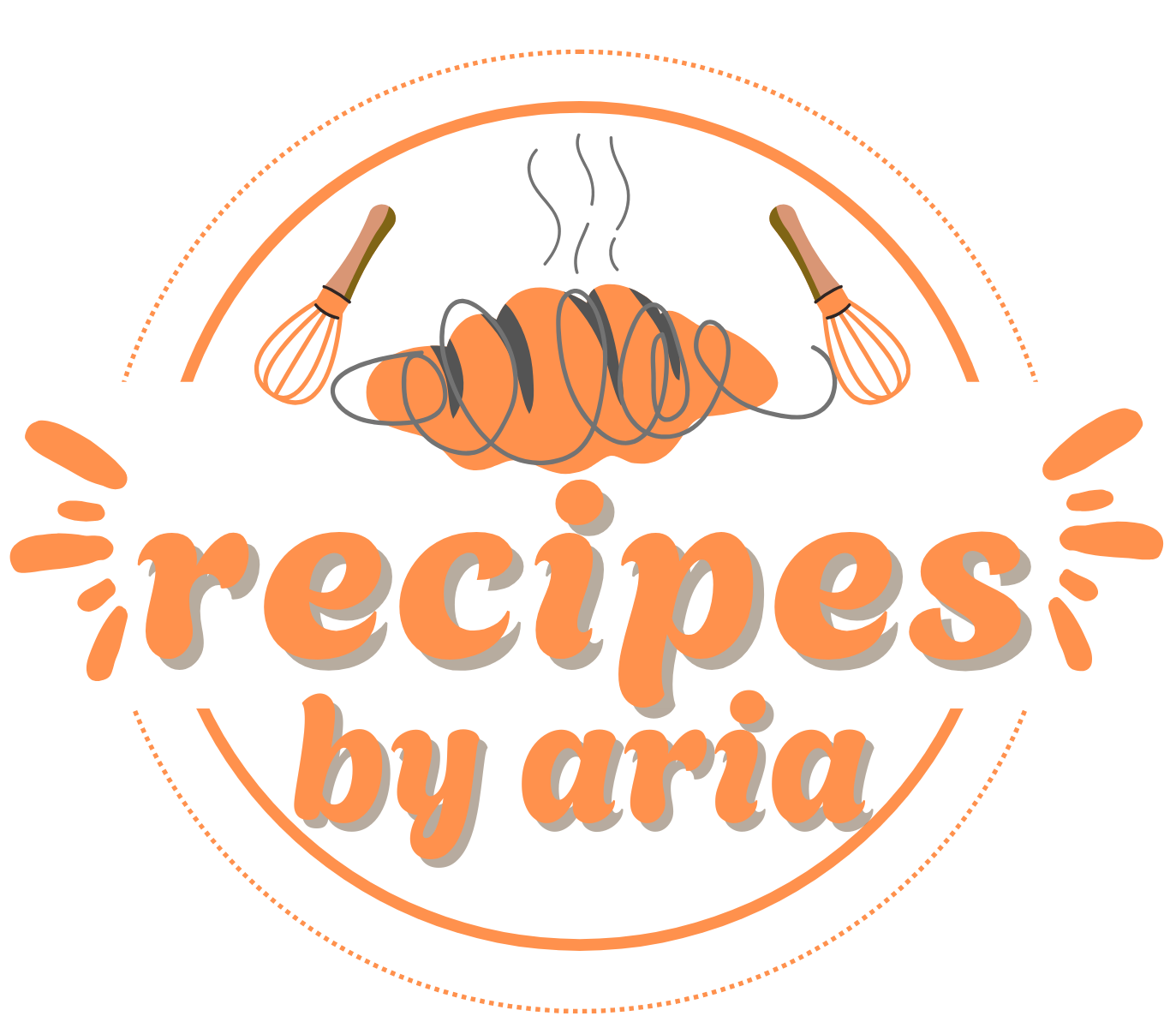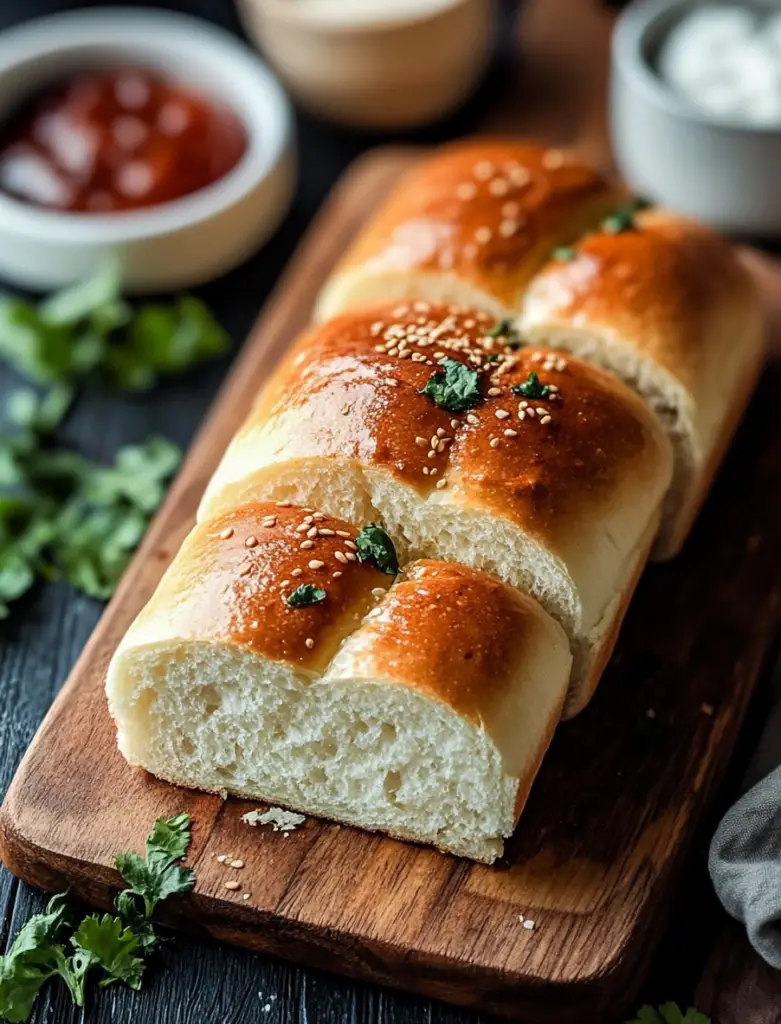This Vegan Pav Bread recipe celebrates plant-based baking with simple yet effective methods. Known for its soft, fluffy texture and golden crust, this bread is a versatile delight, perfect for pairing with curries, jams, or a variety of dishes. A must-try for culinary enthusiasts, it brings the charm of traditional pav bread with a wholesome, vegan twist.
Ingredients
- 2 cups all-purpose flour
- 1 tsp salt
- 2 tbsp sugar
- 2 1/4 tsp active dry yeast (1 packet)
- 1/2 cup warm water (110°F to 115°F)
- 1/4 cup unsweetened almond milk or soy milk, lukewarm
- 2 tbsp olive oil or melted coconut oil
- Additional oil for greasing
Directions
- Activate the Yeast
Dissolve sugar in warm water, add yeast, and let it sit until frothy (about 5 minutes). - Mix the Dough
Combine flour and salt in a large bowl. Add the yeast mixture, lukewarm milk, and oil. Mix until a dough forms. - Knead the Dough
On a floured surface, knead the dough for 8-10 minutes until smooth and elastic. Place in a greased bowl, cover, and let it rise in a warm place until doubled in size (about 1 hour). - Shape and Proof
Divide the dough into 8 equal pieces and shape them into balls. Arrange them on a greased baking tray, spaced slightly apart. Cover and let rise again for 30-40 minutes. - Bake
Preheat oven to 375°F (190°C). Bake the bread for 15-20 minutes or until golden brown. - Finish
Brush the baked bread with a small amount of oil for a glossy finish. Allow to cool slightly before serving.
Nutritional Information
- Calories: 180 kcal per serving
- Serving Size: 1 piece
- Servings: 8
Enjoy baking this fluffy, vegan pav bread as a delicious addition to your plant-based recipe collection!
Vegan Pav Bread: A Wholesome Twist to a Traditional Delight
Vegan Pav Bread is more than just a baked good; it is a celebration of simplicity and tradition combined with a plant-based approach. Known for its soft, airy texture and golden crust, this bread has its roots in the popular Indian pav, a type of bun often paired with flavorful curries or relished on its own with butter or jam. By swapping out traditional ingredients for plant-based alternatives, this recipe offers a delightful, cruelty-free take on a beloved classic.
The Charm of Vegan Pav Bread
Pav bread holds a special place in culinary traditions, especially in India, where it is an integral part of street food culture. From the iconic pav bhaji to vada pav, these soft buns are as versatile as they are delicious. Transitioning this recipe to a vegan version not only makes it accessible to those following a plant-based lifestyle but also brings a sense of mindfulness to cooking.
The vegan approach relies on plant-based substitutes like almond or soy milk and olive or coconut oil to create the same softness and flavor traditionally achieved with dairy and butter. Despite these changes, the essence of pav bread remains intact. The bread’s tender crumb, slight sweetness, and golden-brown finish make it a delightful accompaniment to a wide array of dishes.
The Art of Making Vegan Pav Bread
The process of making vegan pav bread is straightforward yet immensely satisfying. From activating the yeast to kneading the dough and watching it rise, every step is a testament to the magic of baking. The use of active dry yeast ensures the bread achieves its signature fluffiness, while ingredients like sugar and salt strike a balance between sweetness and savoriness.
Kneading the dough is a vital part of the process. This step develops the gluten in the flour, which is crucial for achieving the bread’s structure and texture. The elasticity of the dough transforms during the kneading process, resulting in a smooth and pliable ball that holds its shape beautifully during baking.
Another critical aspect is proofing. Allowing the dough to rise not only enhances its texture but also improves its flavor, as the yeast ferments and imparts subtle, complex notes. The final step, baking, crowns the bread with its golden crust, making it as visually appealing as it is tasty.
Versatility of Vegan Pav Bread
One of the standout features of vegan pav bread is its versatility. While it pairs wonderfully with traditional Indian dishes like pav bhaji or spicy misal, it also works equally well in Western settings. Serve it alongside soups, stews, or salads for a wholesome meal, or use it to make sliders and sandwiches for a quick snack.
Additionally, pav bread’s neutral flavor profile makes it a blank canvas for creativity. You can infuse the dough with herbs, garlic, or spices for a savory twist, or add a touch of cinnamon and raisins for a sweet version. Toast it lightly and spread some vegan butter or jam for a simple, comforting treat.
The Nutritional Benefits of Vegan Baking
Switching to vegan baking isn’t just about ethical considerations; it also offers some nutritional advantages. By using plant-based ingredients like almond or soy milk and olive oil, this recipe reduces saturated fat content compared to its dairy-based counterpart. Olive oil, for instance, is rich in healthy fats that support heart health, while almond milk adds a hint of nuttiness along with essential nutrients like calcium and vitamin E.
Furthermore, vegan pav bread can easily be adapted to cater to different dietary needs. For example, substituting whole wheat flour for all-purpose flour boosts its fiber content, making it a more wholesome choice. Those watching their sugar intake can opt for natural sweeteners like coconut sugar or even omit the sugar entirely for a savory version.
Baking as an Act of Mindfulness
Baking vegan pav bread is not just about the end product; it’s an experience in itself. The process encourages mindfulness, as it requires attention to detail and patience at every stage. Watching the dough rise, feeling its texture transform under your hands, and smelling the bread as it bakes in the oven can be incredibly therapeutic.
Moreover, making your own bread allows you to connect with the ingredients and the art of baking in a way store-bought bread simply cannot replicate. It fosters a sense of accomplishment and provides an opportunity to share something homemade with family and friends.
A Sustainable Choice
In addition to being delicious and healthy, vegan pav bread is a sustainable choice. Plant-based diets generally have a lower environmental impact compared to those reliant on animal products. By incorporating recipes like this into your repertoire, you’re contributing to a more eco-friendly lifestyle.
Choosing vegan ingredients such as almond milk and olive oil supports sustainable agriculture and reduces carbon emissions. Additionally, the simplicity of the recipe minimizes waste, as it relies on pantry staples and can be adjusted based on what you have on hand.
Conclusion: A Delightful Fusion of Tradition and Innovation
Vegan pav bread captures the essence of traditional baking while embracing the principles of plant-based living. It’s a recipe that proves how small changes in ingredients can lead to a big impact—not only in taste but also in health and sustainability.
Whether you’re a seasoned baker or a novice in the kitchen, this recipe offers a rewarding experience. The end result is a batch of soft, fluffy bread rolls that are as versatile as they are delicious. From pairing them with bold curries to enjoying them as a standalone snack, vegan pav bread is sure to become a staple in your kitchen.
By sharing this recipe, you’re not only indulging in a delightful culinary adventure but also promoting a way of cooking that is kind to both the planet and its inhabitants. So, roll up your sleeves, preheat the oven, and embark on this journey of mindful, plant-based baking.
Print
Vegan Pav Bread
Description
This Vegan Pav Bread recipe celebrates plant-based baking with simple yet effective methods. Known for its soft, fluffy texture and golden crust, this bread is a versatile delight, perfect for pairing with curries, jams, or a variety of dishes. A must-try for culinary enthusiasts, it brings the charm of traditional pav bread with a wholesome, vegan twist.
Ingredients
- 2 cups all-purpose flour
- 1 tsp salt
- 2 tbsp sugar
- 2 1/4 tsp active dry yeast (1 packet)
- 1/2 cup warm water (110°F to 115°F)
- 1/4 cup unsweetened almond milk or soy milk, lukewarm
- 2 tbsp olive oil or melted coconut oil
- Additional oil for greasing
Instructions
- Activate the Yeast
Dissolve sugar in warm water, add yeast, and let it sit until frothy (about 5 minutes). - Mix the Dough
Combine flour and salt in a large bowl. Add the yeast mixture, lukewarm milk, and oil. Mix until a dough forms. - Knead the Dough
On a floured surface, knead the dough for 8-10 minutes until smooth and elastic. Place in a greased bowl, cover, and let it rise in a warm place until doubled in size (about 1 hour). - Shape and Proof
Divide the dough into 8 equal pieces and shape them into balls. Arrange them on a greased baking tray, spaced slightly apart. Cover and let rise again for 30-40 minutes. - Bake
Preheat oven to 375°F (190°C). Bake the bread for 15-20 minutes or until golden brown. - Finish
Brush the baked bread with a small amount of oil for a glossy finish. Allow to cool slightly before serving.







